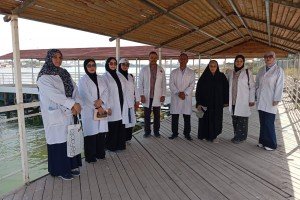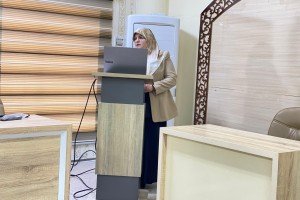
Announcement by the College of Agriculture.....
The College of Agriculture, University of Basra, held a seminar on the study examined the discrimination of the main and sub-stages of the moulting cycle of two species of shrimp Macrobrachium nipponense Metapenaeus affinis, the seminar presented by the researcher Saba Anis Naji aimed to distinguish the main and sub-stages of the moulting cycle of two species of shrimp: Metapenaeus affinis and Macrobrachium nipponense, which are considered a basic indicator of the growth and development of the crustacean, in Al-Mashab River, southeast of marsh Al-Hammar. The study samples were collected seasonally for a period of 10 days for each season for the period from winter 2018 to fall 2019 in the Al-Mashab River, southern of East of Al- Hamar marsh / Basrah and its relationship with environmental variables in the study area. The study included measuring some biochemical variables in the two studied species, specifically total protein, total fat and carbohydrates, and the study dealt with measuring some of the biological characteristics in the two studied species, such as moisture, ash and organic matter. The study of the histological changes which included changes in the deposition of the cuticle during the different stages of the moulting cycle in the M. affinis. As well as examination by scanning electron microscopy of the Uropod in M.affinis shrimp. Some of the antioxidant enzymes represented by reduced glutathione (GSH), catalase and Reactive oxygene species (ROS) in commercial shrimp have identified M. affinis during the different stage of the moulting cycle, this work represents the first study of its type. The IRI was adopted to evaluates the significance of different food items during different stages of moulting in M. affinis, M. nipponense. The seminar recommended that future phenotypic studies should focus on the characteristics of the external structure due to its multiple characteristics, which in turns are used as an indication of the qualitative development. In addition to the effect of the phenomenon of moulting on the feeding behavior of the two studied species, consideration must be given to the design of future breeding experiments in aquaculture and this effect must be understood, which in turn provides important information in developing the use of this behavior to improve the production of the studied species in the study area.







